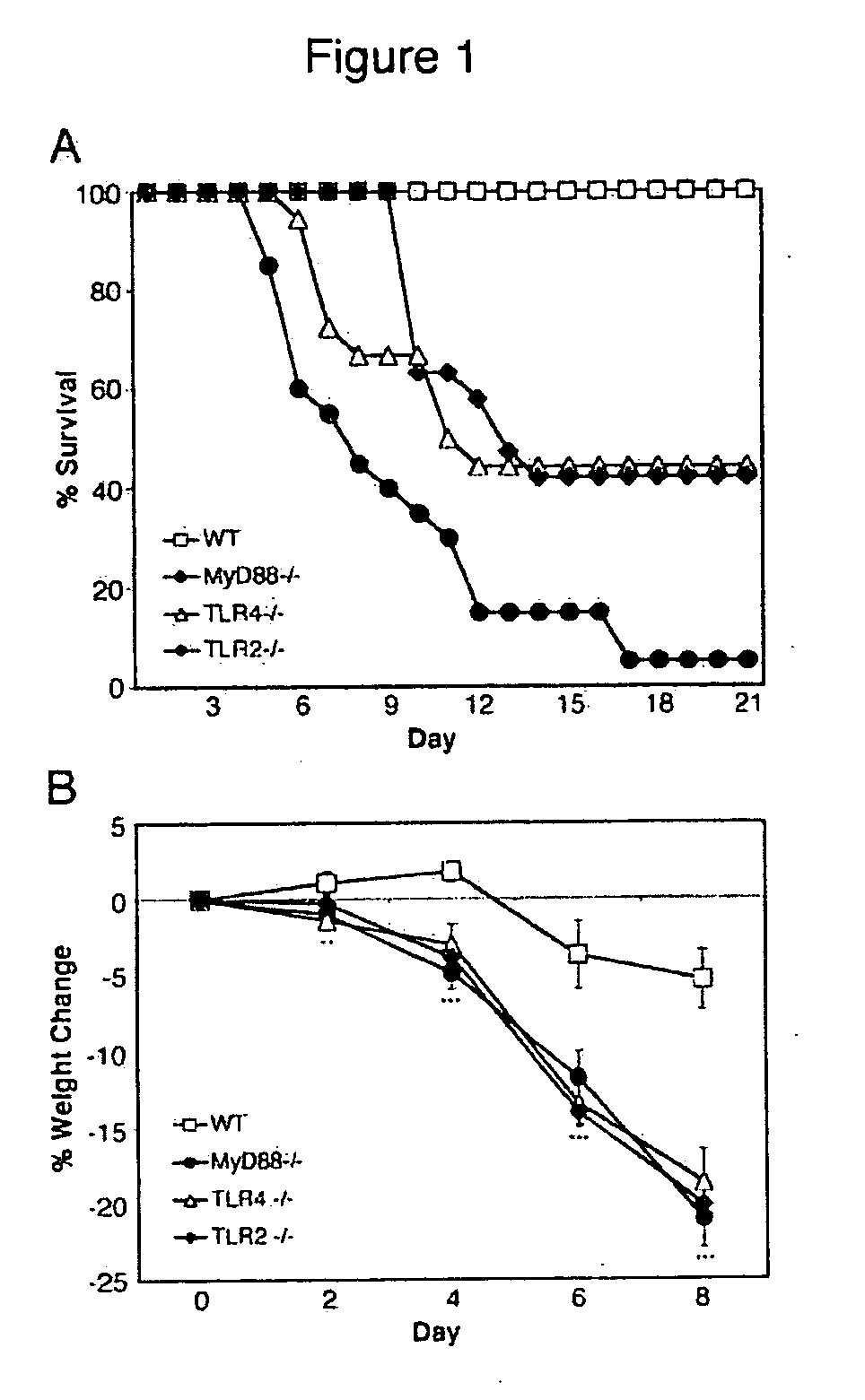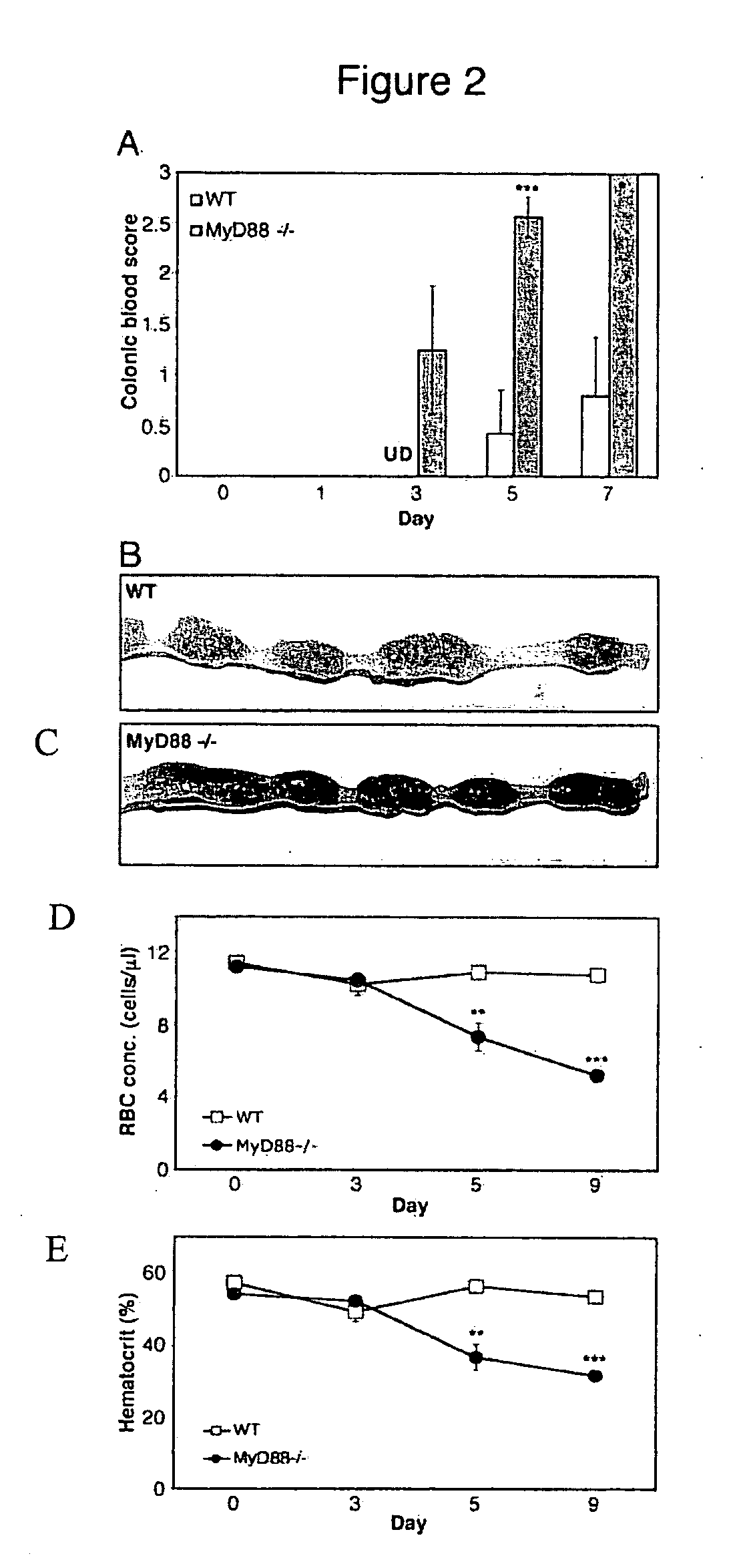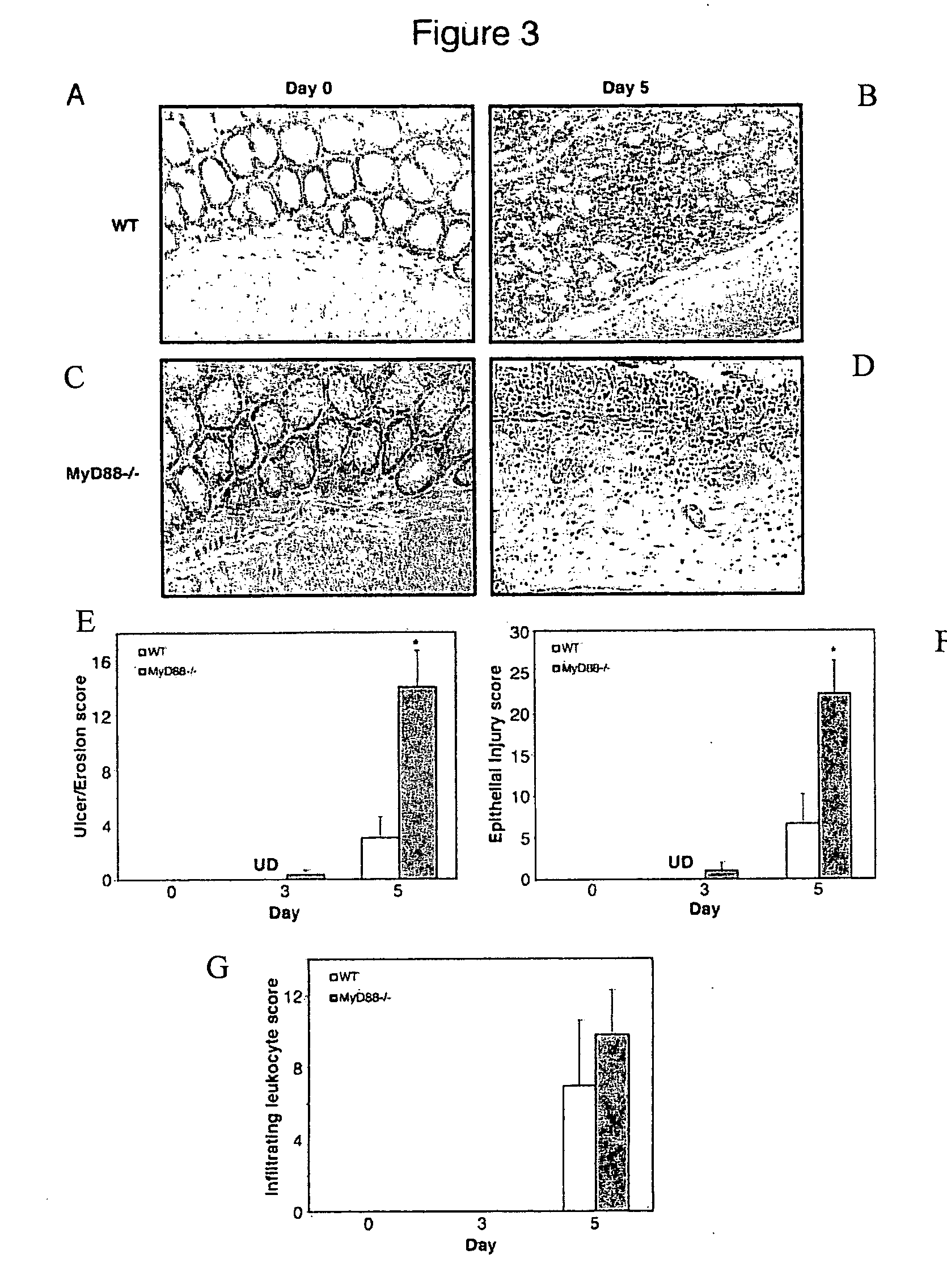Treatment with agonists of toll-like receptors
a technology of toll-like receptors and agonists, which is applied in the direction of peptide/protein ingredients, biocide, saccharide peptide ingredients, etc., can solve the problems of organ damage or some other injury, unsatisfactory ineffective strategies to prevent, control, manage or repair tissue damage, etc., to prevent tissue damage, mediate tissue repair, and prevent further damage to tissue or organs.
- Summary
- Abstract
- Description
- Claims
- Application Information
AI Technical Summary
Benefits of technology
Problems solved by technology
Method used
Image
Examples
example 1
TLRs Promote Tissue Repair
[0074] All complex metazoans are colonized with a myriad of microbial organisms that comprise an indigenous microflora. While present at many of the interfaces with the external world, such as the oropharynx and skin of mammals, the overwhelming majority and diversity of the endogenous bacterial flora resides at the distal alimentary tract, most notably at the colon. In the gut, over 1013 resident bacteria confer many benefits to intestinal physiology comprising a truly mutualistic relationship (Hooper and Gordon, 2001). The metabolism of nutrients and organic substrates, the development of intestinal epithelium, vasculature and lymphoid tissue, and the contribution to the phenomena of colonization resistance to pathogens are only a few of the ways in which the host benefits from the resident microflora present in the gut (Berg, 1996; Midvedt, 1999). However, the presence of commensal bacteria in the gut appears to be of crucial importance in the pathogene...
example 2
TLRs in Wound Healing
[0125] Mice deficient in MyD88 (MyD88− / −; N=6) and TLRs 2 and 4 (TLR2 / 4− / −; N=3) and WT control (N=8) were anesthetized by intra-peritoneal injection of ketamine (100 mg / kg) and xylazine (10 mg / kg). The right flank was shaved with hand-held electronic clippers and swabbed with Betadine and 70% ethanol three times before wounding. One 4 mm punch biopsy was made in the shaved flank. At days 0, 4, 7 and 11 post-wounding, digital photos of the wound were taken along side a 4 mm-diameter paper standard for standardization of dimensions. The area of the wound at these timepoints was quantified using the National Institutes of Health (NIH) Image Version 1.61.
[0126] The lack of TLR signaling in MyD88− / − and TLR2 / 4− / − mice compared to WT mice results in delayed skin wound healing, indicating that TLR signaling promotes tissue repair and wound healing processes (FIG. 11).
PUM
 Login to View More
Login to View More Abstract
Description
Claims
Application Information
 Login to View More
Login to View More - R&D
- Intellectual Property
- Life Sciences
- Materials
- Tech Scout
- Unparalleled Data Quality
- Higher Quality Content
- 60% Fewer Hallucinations
Browse by: Latest US Patents, China's latest patents, Technical Efficacy Thesaurus, Application Domain, Technology Topic, Popular Technical Reports.
© 2025 PatSnap. All rights reserved.Legal|Privacy policy|Modern Slavery Act Transparency Statement|Sitemap|About US| Contact US: help@patsnap.com



